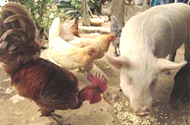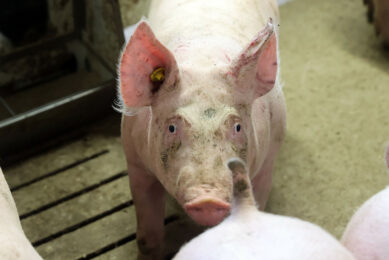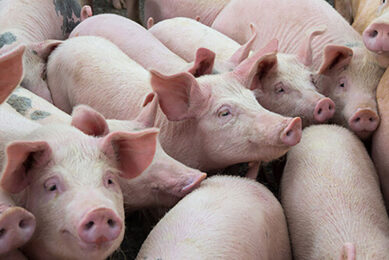H5N1 bird flu virus able to jump to pigs

The H5N1 bird flu virus may be evolving the ability to spread from mammal to mammal, says a team who have discovered that pigs in Indonesia have been infected with the disease since 2005.
The H5N1 bird flu kills 60 per cent of the people it infects. However, most infections occur after direct contact with an infected bird and the disease does not appear to spread well between humans. One way the virus could develop the ability to spread among humans is to first infect pigs, which have many biochemical similarities to humans. Flu viruses adapted to pigs have less trouble adapting to humans than do bird flu viruses – one pig-adapted virus caused the swine flu pandemic in 2009.
Chairul Nidom of Airlangga University in Surabaya, Indonesia, and colleagues in Japan have been tracking H5N1 in pigs since 2005 in Indonesia, the country hardest hit by the avian flu virus. They now report (PDF) that between 2005 to 2007 -when the avian flu peaked- 7.4 per cent of 700 pigs they tested also carried H5N1. There have been sporadic reports of H5N1 in pigs, but this is the first time the extent of the problem has been measured.
Not from pig to pig
In each case, the virus in pigs closely resembled H5N1 from nearby outbreaks in poultry, suggesting it has jumped from the bird to the pig population. That and the small proportion of pigs infected suggest the virus cannot yet spread between pigs. “If the virus was better adapted to pigs it would have spread like wildfire,” says Ab Osterhaus of the University of Rotterdam in the Netherlands, a flu expert not involved in the research.
Virus can easily evade
Since 2007, avian flu outbreaks have diminished in poultry and in people in Indonesia and the investigators found that the rate of infection in pigs has similarly dropped. The team showed that infected pigs show no symptoms. “H5N1 viruses could easily evade detection as they spread through Indonesia in asymptomatic pigs,” warn Nidom and colleagues. Nidom says that in one pig, the virus had developed the ability to bind to a molecule present in the noses of both pigs and humans. That’s exactly the kind of change that could allow it to spread between people. “This shows we should keep a close watch on pig flu, as it can change rapidly,” warns Osterhaus.
New EU collaboration
The European Union is heeding the call and is funding a scientific collaboration called FLUPIG, to study how bird flu adapts to pigs and how it spreads to people. It will meet for the first time later this month.
[Source: Emerging Infectious Diseases]











